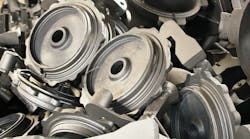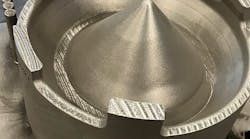Inductotherm Corp. recently installed and commissioned a four-furnace Quad-TrakTM system at AIA Engineering Ltd., in Ahmedabad, India. It’s the first installation of its kind in the world, consisting of four 5,000-kW inverters connected to an 8,000-kg steel frame furnace, fed by a 24-pulse input, 10,000-kW converter system.
AIA Engineering is an ISO 9001-certified producer of highchromium steel castings that provide corrosion- and abrasionresistance for equipment used in mining, cement manufacturing, and thermal-power generation.
According to Inductotherm, the Quad-Trak system gives AIA production flexibility with minimal electrical installation cost, and maximum electrical savings. It will allow the operation to run at 100% power utilization, thereby achieving its highest production potential with the lowest connected kVA from its electricity supply.
AIA’s production target is 10,000 metric tons/month, working in three shifts over 25 days. Maintenance costs will be reduced as high-power furnace transfer switches with associated bus bars are not needed with Quad-Trak.
Inductotherm noted that a significant advantage of multipleoutput induction power supply technology is the ability to sinter or cold-start multiple furnaces simultaneously, or to sinter one furnace while melting in others. The Inductotherm converter does this without harmonics filters or line-power factor problems.
Quad-Trak’s single set of power and water connections and the kVA of a single unit also reduce installation and maintenance costs, and they occupy less space in the melt shop than separate power units.










